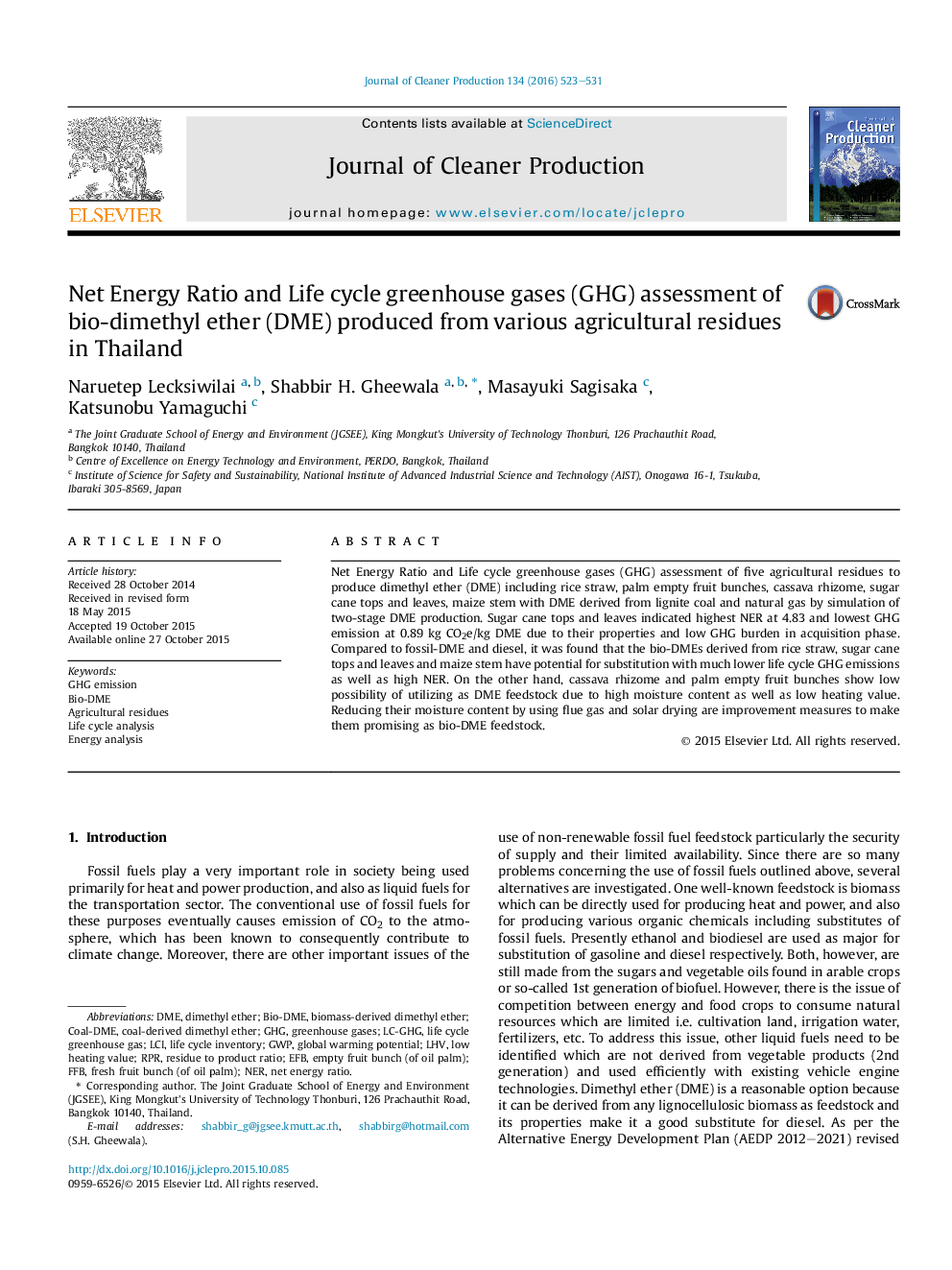| Article ID | Journal | Published Year | Pages | File Type |
|---|---|---|---|---|
| 1744015 | Journal of Cleaner Production | 2016 | 9 Pages |
•All selected agriculture residues can produce bio-DME with NER higher than 1.•Sugarcane tops & leaves have the lowest GHG emissions and highest NER.•Reducing moisture of EFB and cassava rhizome make them promising bio-DME feedstocks.
Net Energy Ratio and Life cycle greenhouse gases (GHG) assessment of five agricultural residues to produce dimethyl ether (DME) including rice straw, palm empty fruit bunches, cassava rhizome, sugar cane tops and leaves, maize stem with DME derived from lignite coal and natural gas by simulation of two-stage DME production. Sugar cane tops and leaves indicated highest NER at 4.83 and lowest GHG emission at 0.89 kg CO2e/kg DME due to their properties and low GHG burden in acquisition phase. Compared to fossil-DME and diesel, it was found that the bio-DMEs derived from rice straw, sugar cane tops and leaves and maize stem have potential for substitution with much lower life cycle GHG emissions as well as high NER. On the other hand, cassava rhizome and palm empty fruit bunches show low possibility of utilizing as DME feedstock due to high moisture content as well as low heating value. Reducing their moisture content by using flue gas and solar drying are improvement measures to make them promising as bio-DME feedstock.
